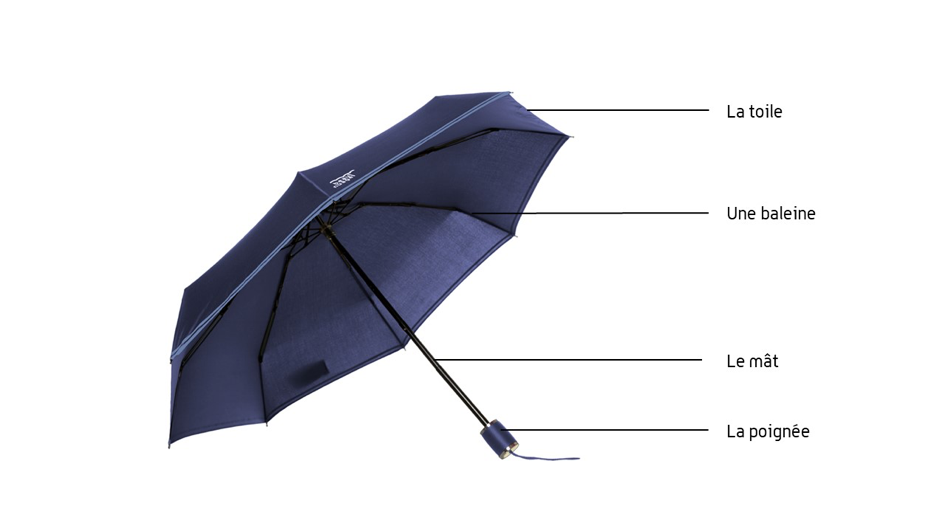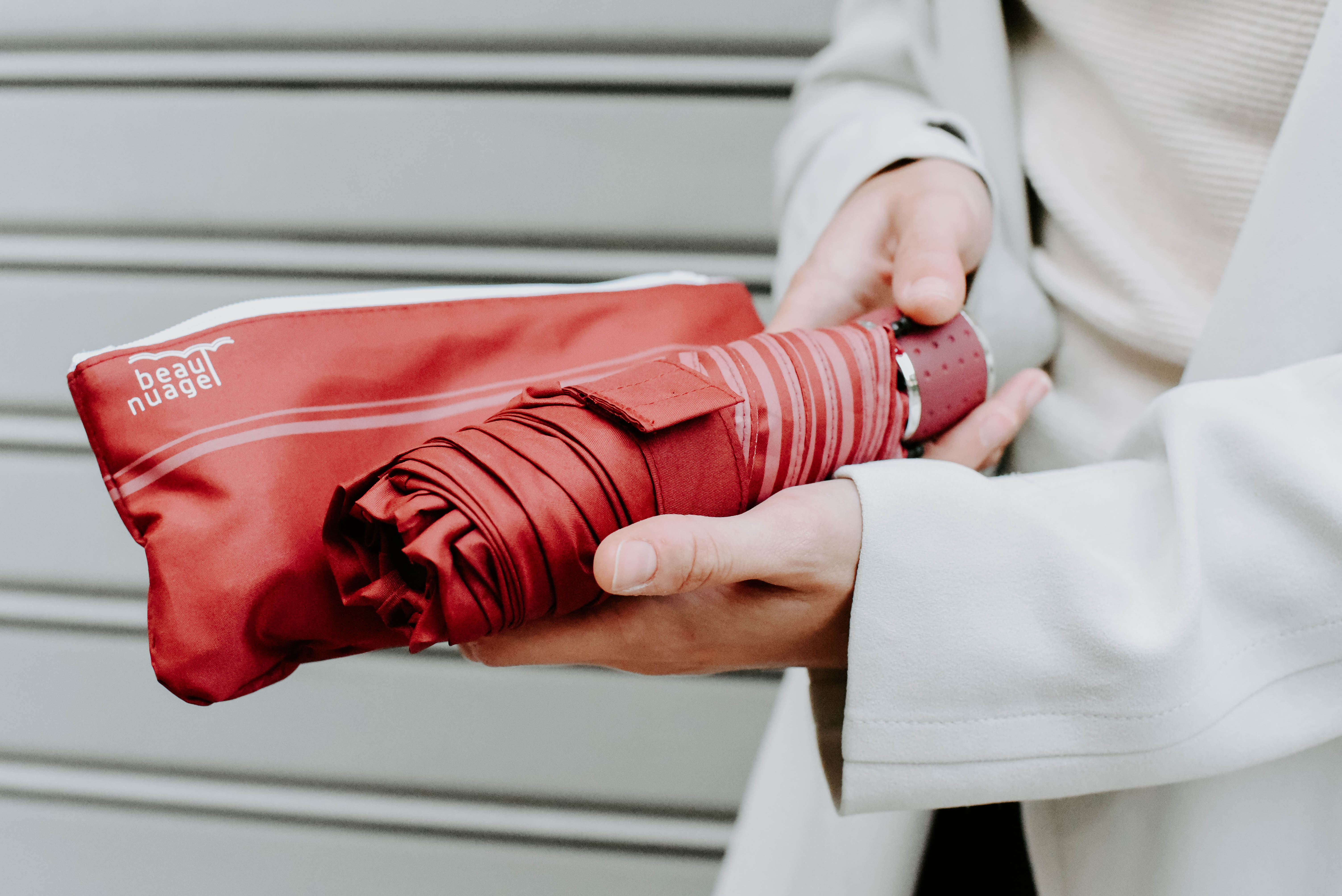The key is to look at the materials of your dream umbrella. 
Ribs
Ribs are the rods that form the framework of an umbrella. There were once made from baleen plates, hence the term “whalebones”. Nowadays, steel, carbon, or fibreglass are preferred over real whalebones to make the best umbrellas. Carbon and fibreglass are both good materials for ribs, but the best possible material for your umbrella is an alloy made from steel and fibreglass. Steel alone is too heavy and fibreglass, on the other hand, might be too fragile. An alloy of the two is a perfect compromise to make your umbrella’s framework both resistant and optimally flexible.
Tip 1: Always count the number of ribs on an umbrella. The more ribs there are, the tenser the fabric will be and thus the stronger it will be facing strong winds. Overall, 8 ribs are more than enough!
Tip 2: In the event of strong winds, you can refold your umbrella just a bit and keep a hand at the top of your mast to release pressure on the ribs. This has never been a perfect solution, but hey, it’s a helpful tip! And you never know if a hurricane is going to strike: you will at least know how to keep your umbrella intact! You have been advised!
Tip 3: If by any chance, even with tip 2, your umbrella gets upturned, closing it is enough to put it back in place! It is so simple, yet people can be unaware of this simple technique. Spread the word, the world needs to know!
The fabric
The density of the fabric shows the quality of the umbrella. The fabric itself is often made with polyester. The more threads per square inch there are, the denser and therefore, better the fabric will be. Most umbrellas have around 180 threads/inch2 . If there are more, that means you found an umbrella that is better than average. To get an idea of the fabric’s density, don’t waste your time counting every thread: just place the fabric you want to analyse over a source of light and observe: the opaquer, the better! Don’t forget to look at the stitching and make sure that no thread sticks out.
The mast
For cane umbrellas, it’s better to choose a wooden mast over any other material. Wood is more rigid and solid. Metal masts provide you with a surplus of flexibility, but they tend to be more fragile. Hence it’s not been a popular material in cane umbrellas. However, for foldable umbrellas, metal is more than suitable. Foldable umbrellas’ masts are often made from steel or aluminium. Steel is more robust and steel mast is hard to twist; aluminium is lighter. Steel tends to be too heavy; aluminium tends to be too breakable. Therefore, the best result will come from a well-balanced mast containing both materials: steel on the thinnest parts to fortify them and aluminium on the large parts that are already solid by nature and thus should be light-weighted.
The handle
Make sure that the grip of the umbrella is comfy and that you don’t have to twist your wrist to have a good grip on your umbrella. You don’t want to end a rainy day on a tendinitis, do you? For long umbrellas, most traditional handles are shaped like wooden canes, but nowadays there are more and more rubber handles, that provide customers with a better grip. On foldable umbrellas, handles are first designed to be practical. They have to be small and ergonomic; your palm still needs to fit well, in order not to hold the mast.
The cover
Most of the time, it is useless. Once your umbrella gets wet, it is hardly possible to put it back in its cover. Since it is barely used, it is often lost. Many umbrella-users even use plastic bags instead of a proper cover. Hence on first analysis: useless. Well… most of the time!
Beau Nuage found the perfect solution! Beau Nuage is the French rain accessories brand. They created an absorbent cover with a three-layer technology. Inside, there is a microfibre layer that absorbs the remaining raindrops on your umbrella. The outer layer is made with the umbrella fabric in order to repel water. The medium layer makes sure of the waterproofness of the cover. With it, you will never be bothered by downpours nor their aftermaths! You can always keep your umbrella dry (and your clothes, your bag, etc.). Once in its cover, you can also keep it with you and never again face the risk of forgetting it at a restaurant or a store!
Now you have all the key information to choose the umbrella of your dreams, the last step is to pick a style and a colour that will suit you and that will brighten up your wardrobe. Let’s carry on!
François